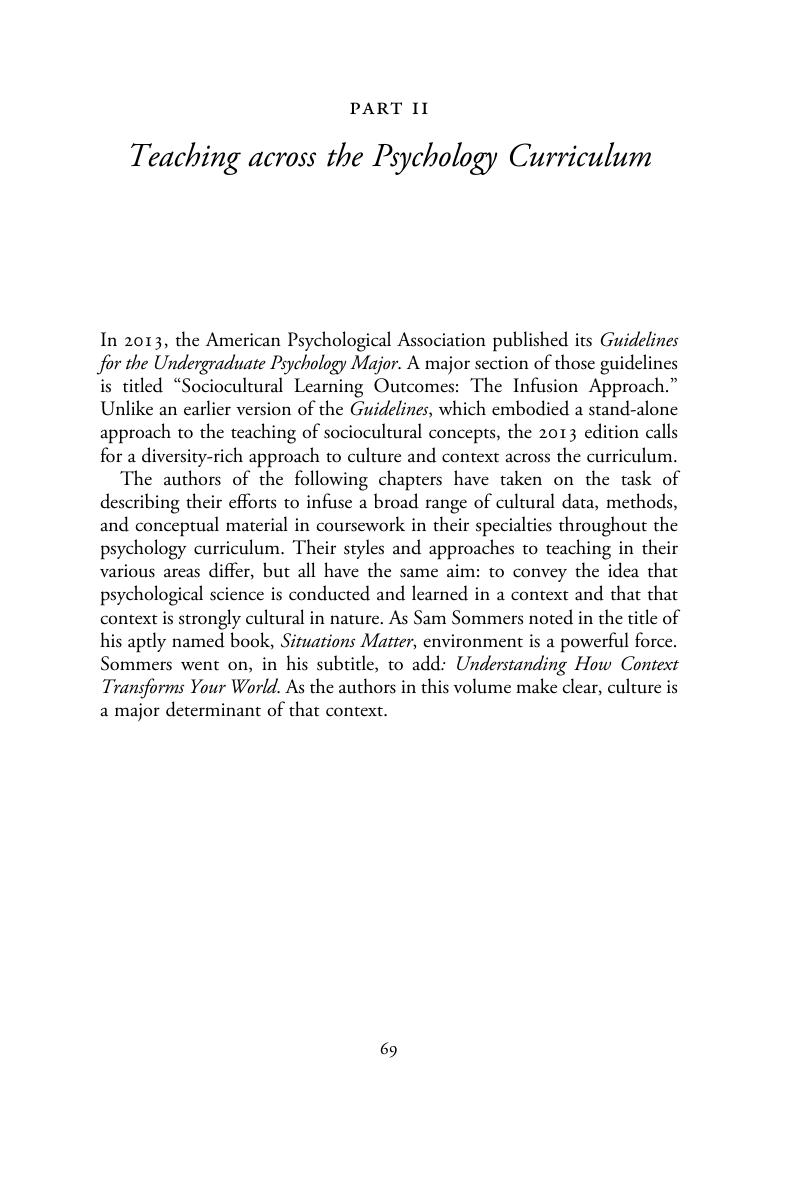Part II - Teaching across the Psychology Curriculum
Published online by Cambridge University Press: 30 March 2018
Summary

- Type
- Chapter
- Information
- Culture across the CurriculumA Psychology Teacher's Handbook, pp. 69 - 544Publisher: Cambridge University PressPrint publication year: 2018

